Jul 19, 2021 | IIASA Network, Risk and resilience, Women in Science
By Raquel Guimaraes, guest research scholar in the IIASA Migration and Sustainable Development and Equity and Justice research groups and assistant professor at the Federal University of Parana in Brazil
IIASA Network and Alumni Officer, Monika Bauer, recently invited me to participate in a genuinely important event hosted on IIASA Connect with the aim of gathering the IIASA community to discuss the gender dimension in research. As a gender researcher, this topic is part of my daily activities, and I decided to focus on the most important findings of my research: gender, disasters, and climate change.
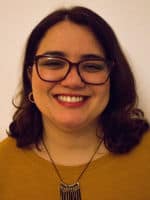
© Raquel Guimaraes
In my talk, I gave an overview of the data relating to gender and disasters. According to the United Nations Development Programme, disasters lower women’s life expectancy more than men’s; moreover, women and children are 14 times more likely to die during a disaster. For example, most of the victims trapped in New Orleans after Hurricane Katrina were African-American women and their children.
Given these facts, it becomes clear that gender is an important dimension of disaster and climate change research. Why is that? First, because gender and natural disasters are socially constructed under different geographic, cultural, political-economic, and social conditions and it has complex social consequences for both women and men. They therefore highlight societal, cultural, and religious norms and values, and shape the needs and risks of the affected individuals. Second, because disasters often affect women, girls, men, and boys differently due to gender inequalities caused not only by socioeconomic conditions, but also by cultural beliefs and traditional practices.
In addition to the above, climate change is connected to an increase in the frequency and/or severity of natural disasters such as flooding, heat waves, and cyclones. Disasters will therefore exacerbate existing inequalities and vulnerabilities in communities, since, as already mentioned, they have a wide range of effects for men and women, as well as for youth and children in both developing and developed countries.
Interestingly, the discussion on the intersection between gender and disasters is not new. References to gender as an issue in climate change debates and international protocols on disaster management have been made since at least the 1994 Yokohama World Conference on Natural Disaster Reduction. Since then, the international community has repeatedly called for gender-responsive disaster risk management.
To ensure gender equality and to overcome problems of marginalization, invisibility, and under-representation, gender concerns and women’s issues has been included into mainstream disaster risk reduction policies. Hence, understanding different gender roles, responsibilities, needs, and capacities to identify, reduce, prepare, and respond to disasters, is crucial to promoting effective disaster risk management.
Given the gender dimension of climate change and disaster research, some important questions that come to mind are: Do women really lack power in disasters? Are they really the fragile gender? The answer is: not always. Evidence shows that, despite gender-differentiated vulnerabilities, women and girls are also powerful agents of positive change before, during, and after disasters.
My research on floods, for instance, shows that in Brazil and Thailand, women can be agents of change. Preparedness to natural disasters have been recognized as key in disaster risk management to the extent that local and international actors emphasize the importance of saving lives and avoiding losses, even before the onset of a disaster. If there are different strategies for disaster prevention according to gender, then emergency management agencies and policymakers should account for these differences, ensuring that men and women combine their strengths to maximize preparedness for floods. Through data from two surveys, I evaluated preparedness by assessing several indicators that accounts for the provision of protective items, emergency plans, and the availability of insurance or information. Using econometric models, I found that women play an active role in disasters, being resourceful actresses in times of crises.
Therefore, during the IIASA Connect Coffee Talk I asserted that gender should be integrated as the basis of a complex and dynamic set of social relations in disaster and climate change research. I appreciate the opportunity IIASA Connect gave me to reflect on this issue with colleagues.
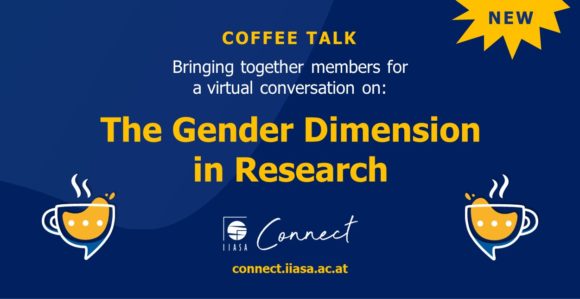
Note: This article gives the views of the author, and not the position of the Nexus blog, nor of the International Institute for Applied Systems Analysis.
Jun 17, 2021 | IIASA Network, South Africa, Systems Analysis
by Kekeletso Makau, Communications Administrator at the Africa Centre for Evidence, University of Johannesburg, former Corporate Communications Intern at the National Research Foundation (NRF) of South Africa and 2020 IIASA External Relations Fellow

In mid-March last year, I was introduced to Nicole Arbour and the broader Communications and External Relations Department at the International Institute for Applied Systems Analysis (IIASA). This was in my capacity as the incoming External Relations (ER) Fellow and current Corporate Communications Intern at the National Research Foundation (NRF) of South Africa. The announcement of my ER fellowship came in just days before South Africa’s first lockdown due to the COVID-19 pandemic. It was the beginning of a new normal, where I, like many others would have to rely on multiple digital platforms and tools to work, communicate, and in some instances, engage for social interactions.
As I was spending more time online, learning more and more about multiple digital tools and how to optimally use them to “get stuff done” timeously under COVID-19 lockdown, the timing was perfect to assist in the conceptualization of a new online virtual platform. This would serve as a community building tool, developed to bring together the global systems analysis community that includes IIASA current staff, alumni, and National Member Organization (NMO) members, committees, and collaborators. Working in partnership with the IIASA CER team as part of the NRF Strategic Partnerships (SP) directorate team, I was well positioned, and felt empowered to deliver on this stakeholder relations exercise, owing to the support I enjoyed from the whole team.
Working on bringing together researchers in the field of Systems Analysis in South Africa (and the broader Southern African Development Community region) on the IIASA Connect platform was a highlight that continues to be one to this day. As a communications professional, I enjoy storytelling, and I enjoyed the privilege to read up on our network members, from emerging researchers to the well-established names that need no introduction. It has been insightful and inspirational to my own journey in science communication.
The successful launch of the IIASA Connect platform in October 2020 was evidenced by the support of leaders, in particular, IIASA Director General Albert van Jaarsveld, NRF deputy CEO of RISA and then Vice-Chair of the IIASA Council Gansen Pillay, and Deputy Vice Chancellor of Nelson Mandela University and former South African Systems Analysis Centre (SASAC) Director Thandi Mgwebi, who delivered an insightful keynote address on leveraging networks for increased systems analysis impact. The successful launch event felt like a pat on the back to me, as this was a project commenced under uncertain COVID times. Within months we were able to gather members of the SASAC community and continue to facilitate engagements in an effort to offer benefits to our members for being part of an exclusive networking platform that enables their growth and fuels their passion for advanced systems analysis research.

I am currently one of the Regional Outreach Leads focused on the South African systems analysis community on IIASA Connect. In my use of the platform, I have found it to be a highly interactive tool, with an interactive map you encounter after successfully logging-in. It is always fun seeking out familiar faces on the map from different regions of the world. The opportunity to engage live with high profile members of academia from your own region and abroad has been made (more) accessible on the platform, thereby enabling more opportunities of research collaborations with scientists you wouldn’t ordinarily have access to. For me, it means having credible sources of content and inspiration for my writing. Having both researchers and policymakers on the platform, makes IIASA Connect the ideal tool to bridge the existing gaps in the science-to-policy interface. Information is shared through the live feed, making it easy for a user to navigate to the source site and read up on information that I would have otherwise not came across or considered.
To be part of such a big stakeholder exercise from start to finish has been fulfilling, and the journey continues. The IIASA Connect platform, much like my career in science communications is still in its early stages. We are fully aware of the work that still needs to be done to reach the tool’s optimal capacity to the benefit of our network members. We are excited about the prospects it brings to science diplomacy, particularly for South Africa as an IIASA member country, our researchers and policymakers alike in advancing engagements between these two parties and using the platform to achieve the SDGs and agenda 2063 for the African continent. For me personally, it is an open access to the world’s best researchers to learn from, fuel my science communications journey, and advance my external relations expertise.
Note: This article gives the views of the author, and not the position of the Nexus blog, nor of the International Institute for Applied Systems Analysis.
Jun 22, 2020 | Alumni
by Ralph L. Keeney, IIASA alumnus and Professor Emeritus at Duke University
Ralph L. Keeney is a professor and consultant about decision-making. He was a research scholar at IIASA from 1974-76, where he and Howard Raiffa finished their book Decisions with Multiple Objectives. Here he describes his most recent book, Give Yourself a Nudge: Helping Smart People Make Smarter Personal and Business Decisions, and how it can impact you.
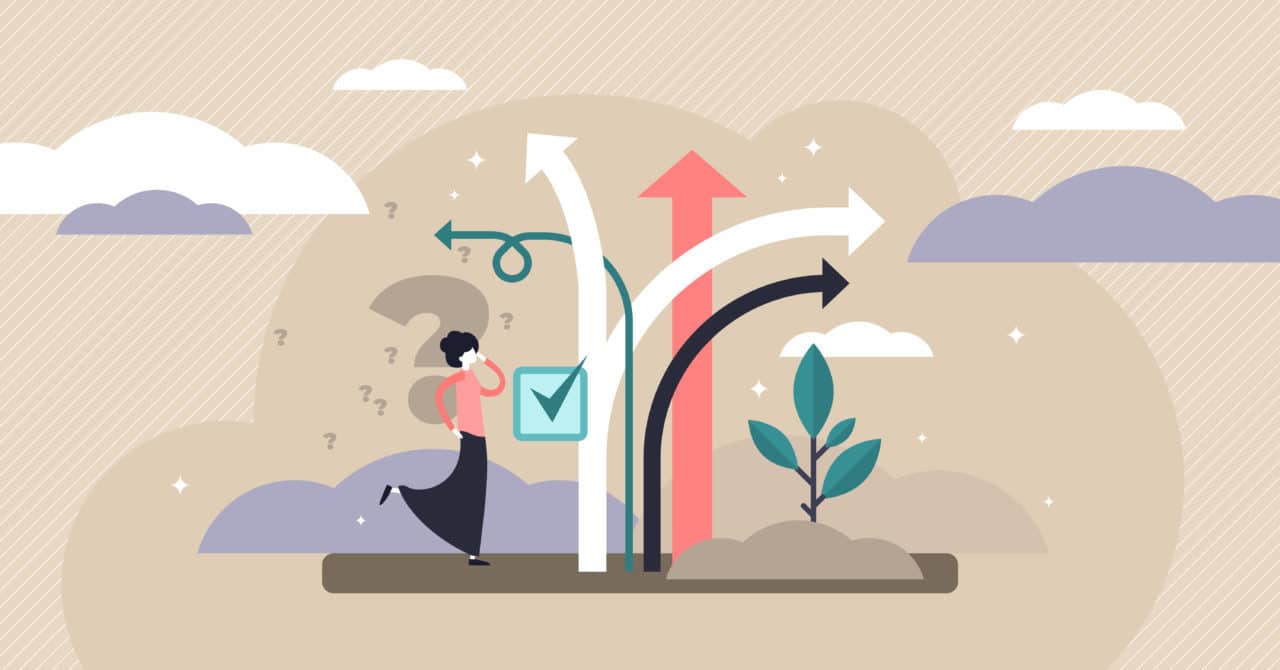
© VectorMine | Dreamstime
Few individuals understand the key role of decisions in one’s life. That is because many things other than decisions can increase the quality of your life. If you improve your professional skills, including your decision-making skills, you will get more job opportunities and end up doing more interesting work with better pay. If you regularly exercise and eat a better diet, your fitness and health will improve. Of course this is true, but none of this could happen without initially making decisions to improve professional skills, to exercise regularly, or to eat a better diet, and then making the routine decisions to follow through to turn your plans into reality. That’s why making decisions is the tool for improving your life. The rest of your life just happens beyond your control.
We all learned to make decisions by trial and error as very few individuals have had any education or training about how to make good decisions. Hence, we each have our own decision-making style composed of habits. Over the last four decades, researchers and scientists in the fields of behavioral economics and psychology have identified numerous biases and shortcomings of the habits used by all decision-makers. A concise summary of these findings is that decisions are often not adequately understood when a choice is made, and the choice of an alternative strongly depends on how the alternatives are presented rather than on their potential impacts.
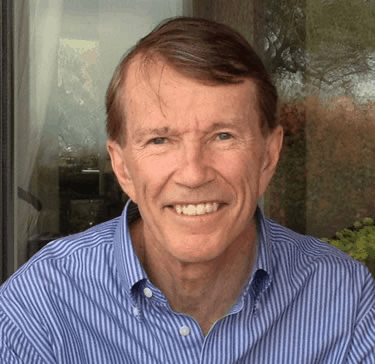
© Ralph Keeney
My new book, Give Yourself a Nudge presents numerous ways for you to limit the influence of the biases and shortcomings of your natural decision-making habits. It describes and illustrates several different types of personal nudges that guide you to make smarter decisions. These nudges help you clearly define the decision that you face, thoroughly articulate what you want to achieve by making that decision, create better alternatives to consider, and deliberately identify more desirable decisions to face. Personal nudges are applicable to all of your decisions.
My favorite personal nudge concept is called a decision opportunity. To understand this important concept, ask yourself “Who should be making your decisions?” Obviously, you should. So who should be making the decisions about which decisions you should face? This is a more challenging question. My response is that you should be making more of them than you currently are.
You do not choose the decision problems that occur due to the actions of others and circumstances beyond your control, and you must reactively address these decisions. However, you can proactively identify any specific decision that you want to face. I refer to these decisions as decision opportunities.
Pursuing a decision opportunity usually improves your life, whereas solving a decision problem rarely can improve your life. Let me explain. Most decision problems result from something that becomes worse in your life: you become sick, your car is damaged, or you lose your job. Solving such a decision attempts to restore your quality of life to its level before the decision problem occurred. When you create a decision opportunity, nothing in your life becomes worse. Pursuing a decision opportunity should improve circumstances which raises your quality of life.
To create a decision opportunity, all that you initially need to do is think about something you would really like to have or experience for yourself or others. You then define the decision opportunity as ’decide how to make that desired future a reality’. There are no limits to thoughts, so anything you envision can be the basis for a decision opportunity. After you define a decision opportunity, then address it in the same way that you do for a decision problem. Specifically, clarify all of your objectives for that decision opportunity, next create a set of potential alternatives to achieve them, and then select the alternative that best achieves your objectives.
The only reason to make any decision is to achieve something. That something is made clear by identifying the objectives for the decision, which should then guide all effort on that decision. Fully identifying all the objectives for an important policy decision is difficult and often not done. At IIASA, I developed techniques to help stakeholders articulate their objectives, which stimulates the creation of a richer set of alternatives and provides a basis for a more impactful analysis of those alternatives. Fully identifying all of the objectives for any IIASA project today is just as critical as it was in the past.
Note: This article gives the views of the author, and not the position of the Nexus blog, nor of the International Institute for Applied Systems Analysis.
May 26, 2020 | Energy & Climate
Jarmo Kikstra, a research assistant in the IIASA Energy Program, shares his experience at EGU2020: Sharing Geosciences Online.

© Freepik
When our abstract for the 2020 General Assembly of the European Geosciences Union (EGU2020) was accepted, I was very excited as this would be my first scientific conference. EGU2020 was a few weeks ago and took place completely virtually for the first time due to COVID-19. Let’s reflect upon what this experience was like.
As an early career researcher, I was very much looking forward to presenting the research I have worked on for many months. While I had presented preliminary results of this and other research before, both at my university and at my research department, these presentations had been internal or small-scale. EGU2020 was the first time presenting my research to the public, with experts from various fields being able to see the work and provide their input. It felt to me, like a first step into entering the pubic academic debate, an important step into becoming part of a research community.
But clearly, with the ongoing COVID pandemic, the conference was quite different to what I had expected my first conference to be like. EGU2020 became “EGU2020: Sharing Geoscience Online”. With 16,273 scientists participating last year, clearly a big effort took place to move such an event online, and with 26,219 individual online registrations in the online chat system, it seems to have been a success. But of course, not all registrations are equal, and participation numbers are not the only thing that count. So, how was this virtual EGU2020 experience for me?
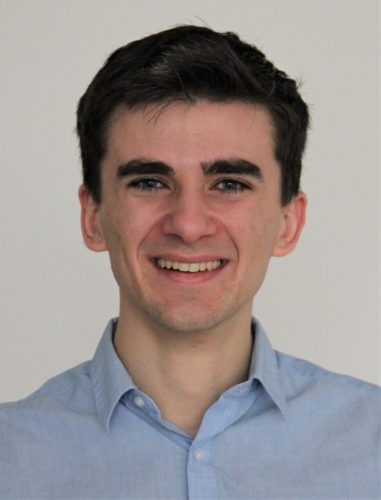
© Jarmo Kikstra
First, my experience was much shorter than originally envisaged. While this is largely a matter of choice, I, and many other participants, participated in fewer sessions than we would have done during a physical conference. The simple fact of not being ‘out of office’ contributed to me continuing to work on other ongoing tasks for large parts of the week.
However, the chat session and oral presentation session I joined, were surprisingly intense. Many presentations (that would have normally been poster presentations) were discussed in a plenary chat or oral session, and there was little time (~6 min) available for each presentation, meaning that content was very dense, and discussed at breakneck speed. In this way, a snapshot of the current state of research in my field was provided openly with everyone seeing all comments and all presentations in the session. Something that was missing that could have been useful, by complementing the main chat box, were separate channels for each presentation. This could have made follow-up discussions in the chat sessions easier, without interrupting main discussions on the current presentations, and therewith stimulating one of the most important parts of conferences – feedback on the work you have presented.
Proponents of virtual events will argue that doing this will greatly reduce the environmental footprint of science, as (air) travel is the biggest chunk of GHG emissions of many scientists. In fact, a central debate at EGU2020 discussed this topic, and the first question of the Cercedilla Manifesto reads: “Is a physical meeting necessary?”. Opponents however point to the current impossibilities of replacing the benefits of meeting in-person, including higher engagement, getting an academic network, unexpected (group) discussions, social encounters and events, and the possibility for live feedback, etc. Especially for early career scientists, it is often said that attending conferences is very beneficial.
Networking virtually will never be exactly the same as in person, and I don’t think this is something to aim for. Networking can happen in many different formats; however, it is clear to me now that we can still take quite a few steps into increasing the effectiveness of virtual networking during such events. For instance, I did not ‘meet’ new people, whereas that would have surely happened during a physical meeting, even if I would not have actively made an effort. So perhaps when organizers are putting together a virtual event, it may pay off to be creative in providing virtual networking opportunities.
Many argue that an online event is also much more conducive to opening up science, with an enormous potential for increasing the accessibility to science and scientific discussions and stimulating the development of knowledge. The great success of EGU2020 is probably already in its name: “Sharing Geoscience Online”. On the EGU2020 website you can find thousands of presentations, on all topics that are related to geosciences, with many contributions from IIASA. In other words, a lot of research content has been uploaded to one place, open to everyone; thereby turning this scientific event into a great resource for sharing, learning, asking questions and providing feedback. Discussions on this platform will be ongoing until the end of the month. So, take advantage of this opportunity and have a look!
Note: This article gives the views of the author, and not the position of the Nexus blog, nor of the International Institute for Applied Systems Analysis.
Apr 17, 2020 | Alumni, Germany, IIASA Network, Systems Analysis
By Liza Soutschek, doctoral researcher at the Leibniz Institute for Contemporary History, Germany
Liza Soutschek shares her journey in researching the institute’s history relating to the Cold War for her PhD dissertation.

© Liza Soutschek
IIASA, Schloss Laxenburg, November 1975
Howard Raiffa, the founding director of IIASA, was about to leave Schloss Laxenburg in November 1975 to return to the USA. In his farewell address, he reflected on the institute’s first three years as an East-West research institute during the Cold War and concluded:
“My most exhilarating moments at IIASA, the times when I feel most rewarded by all our efforts, occur whenever I am present at a scientific meeting and scientists from different disciplines and cultural backgrounds argue with each other, on substantive issues, without being conscious of their roles as mathematicians or economists or management scientists or of their national identities. I will never forget those times, when [Wolf] Haefele of F.R.G. [West Germany] and [Hans] Knop of G.D.R. [East Germany] would argue heatedly on a scientific point – sometimes on the same side and at other times on opposite sides.”
As Howard Raiffa pointed out, IIASA, founded in 1972 in the wake of Cold War détente, provided an exceptional platform for scientific dialogue and exchange across borders – in particular for East and West Germans.
Intrigued by IIASA’s history
Looking back from the present day, knowing how difficult interdisciplinary collaboration between scientists from different nations and cultures can be, one question that comes up right away is: what was it like working at IIASA in the 1970s and 1980s in the context of the Cold War?
I asked myself this question when I first came across IIASA in the fall of 2017, and the spring of 2018, when I started working on a dissertation project on the institute’s East and West German history. It is done as part of a research group that examined “Cooperation and Competition in the Sciences” in case studies from a historical perspective. In my dissertation, I analyzed the relations between scientific and political actors from East and West Germany in the context of IIASA, with a focus on mechanisms of collaboration and competition at the local site as well as on wider effects in the entangled Cold War German history.
Historical research: books, dust, and coffee
Historians write books, but in order to do that we have to read hundreds of other books, look for traces in (sometimes more, sometimes less) dusty archives, and drink a lot of coffee with interesting people.
Initially my research led me to several German state and scientific archives. In the Federal Archives, for example, I found evidence of close interconnections between German science and politics during the Cold War regarding IIASA – not only in the case of the GDR, but also the FRG. Besides the intention to build a bridge between East and West, IIASA was also an arena for Cold War rivalry in the eyes of both German states. My favorite archival find were the documents of the Max Plank Society, which was the former West German National Member Organization of IIASA.
In Germany, I also had the opportunity to talk to former West German members of the IIASA energy group in the 1970s and 1980s. Among them was Rudolf Avenhaus, who started working in the energy project under the leadership of Wolf Häfele in the summer of 1973. Over several cups of coffee, he told me about his life, what it was like to work at IIASA in those years, and about his collaboration with Willi Hätscher, one of the few East Germans in the group at that time.
A visit to IIASA and an inquiry
I finally had the chance to visit IIASA in the summer of 2019. With the help of several IIASA colleagues, I explored the IIASA archive for insights into the institute’s East-West German history. I also had the opportunity to discover more by talking to former and current IIASA employees. Two conversations I want to mention in particular, were with long-term staff members Martha Wohlwendt and Ruth Steiner, who provided an alternative view of IIASA to that of the scientists. I enjoyed my visit to the beautiful Schloss Laxenburg immensely and hope to return.
After collecting all these sources, from archival records to personal interviews, I can now begin writing an account on how cooperation and competition formed the relations between East and West Germans in the context of IIASA and thus, make IIASA’s history even better known.
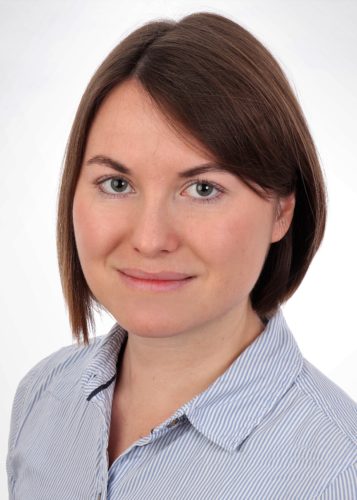
© Liza Soutschek
After sharing this insight into my research, I would like to end with an inquiry. If you read this and think, “I could add something to this story!”, I would be happy to hear from you. Whether you are a former German IIASA staff member or have another connection to all of this, maybe we can add another piece to the puzzle together.
Contact:
Liza Soutschek
Institut für Zeitgeschichte München – Berlin
Leonrodstr. 46b, 80636 München, Germany
soutschek@ifz-muenchen.de
Note: This article gives the views of the author, and not the position of the Nexus blog, nor of the International Institute for Applied Systems Analysis.
More on the history of IIASA.











You must be logged in to post a comment.